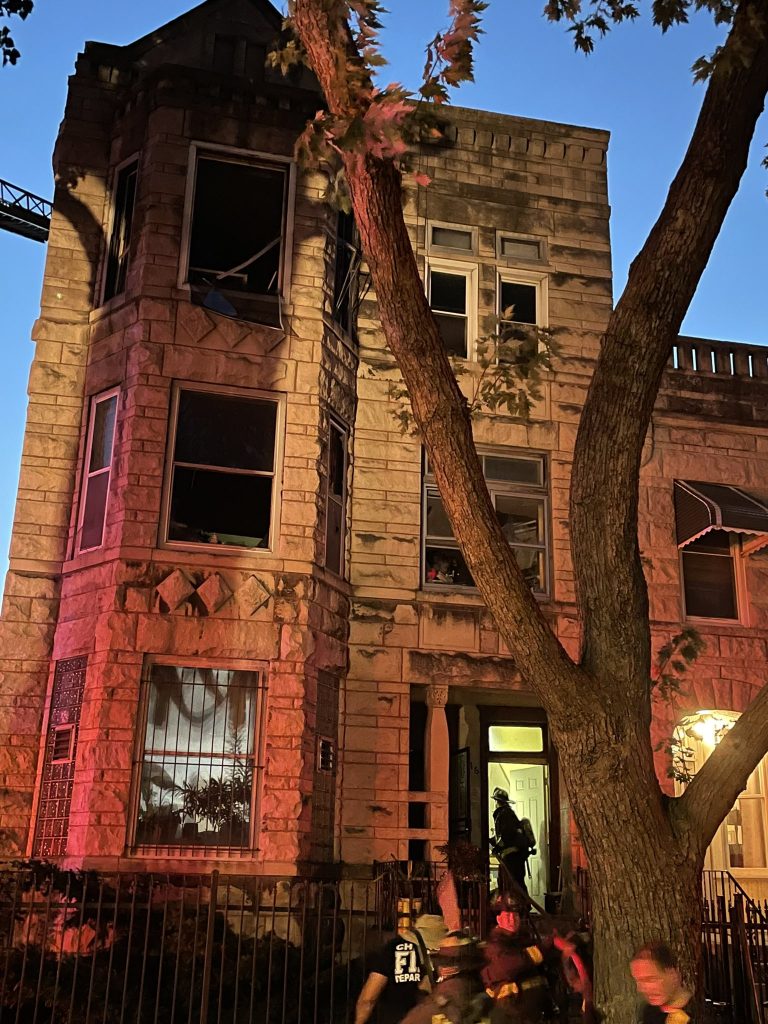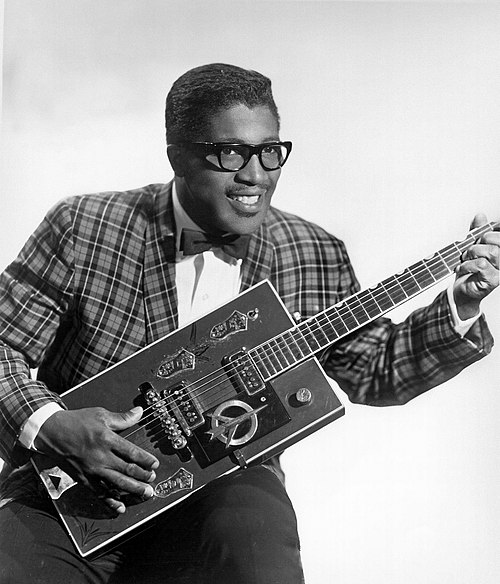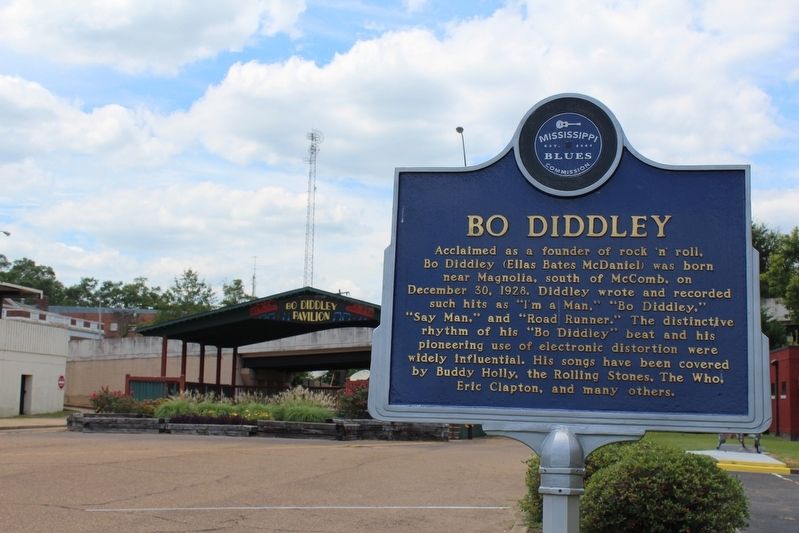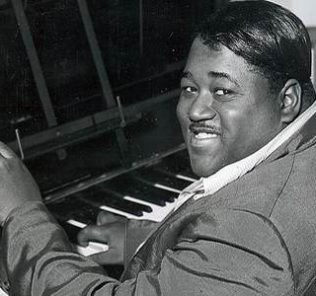Bo Diddley House Fire in Chicago

Bo Diddley house, 4746 S. Langley on 9/20/21. Image courtesy of Chicago Fire Department.
There is a gritty beat to the music of Chicago.
It is deeply appointed, carries no pretense, and is something to hold on to. Forever.
In 2004 the late Bo Diddley told me he developed his famous beat when he heard Gene Autry’s “(I Got Spurs That ) Jingle Jangle Jingle” on the radio on the south side of Chicago.
Diddley was born Ellas Bates McDaniel in Mc Comb, Miss. just north of the Louisiana border.
His family moved to 4746 S. Langley in Chicago when he was seven. They wanted him to escape the sharecropper’s life. Diddley learned to play classical violin and trombone at Ebenezer Baptist Church, 4501 S. Vincennes Ave, where choir members included Mahalia Jackson and Dinah Washington. Diddley also made his box-shaped guitars while attending Foster Vocational School, 720 W. O’Brien, where his classmate was future blues legend Earl Hooker. The school site is now a vacant lot.
Diddley’s home at 4746 S. Langley is still standing.
It caught on fire Monday evening. Chicago Fire Department spokesman Larry Langford told me on Monday that the home is intact and there was some interior damage in what appeared to be a residential building. The rear porches were lost to the fire on the durable masonry structure.
The House of Bo was not on the City of Chicago’s ambitious Music Lives Here initiative, but this turn of events serves as another example of how important it is for the city to hold on to its musical history.
Connect the dots: Diddley hears “Jingle Jangle Jingle,” written in 1942 by Joseph Lilley and Frank Loesser. He adds a profound West African beat for a groove that later inspires Buddy Holly (“Not Fade Away”), Bruce Springsteen (“She’s the One”), the Who (“Magic Bus”), the Strangeloves (“I Want Candy”) and many others. Diddley was an avatar of rock n’ roll and the first sparks were at 4746 S. Langley.

The great Bo Diddley, 1957.
Diddley lived in Chicago through the 1950s, playing at the old 708 Club, 708 E. 47th St. and recording at Chess Records. Few people realize Diddley had been rejected by Vee-Jay Records, 1449 S. Michigan. In the mid-1950s he was packing a hot demo with the jingle-jangle beat and African-American hand-clapping rhythms that he titled “Uncle John.”
“Ewart Abner, Jr., label executive (at Vee-Jay) told me, ‘We don’t know what the hell that is you are doing,” Diddley told me. “So I went to Chess. Phil Chess said, ‘This is different. Let’s give it a try.’ Diddley reworked the “Uncle John” lyrics and retitled the song “Bo Diddley.”
Chess added maracas to underscore the hypnotic beat and after 35 takes Diddley walked out of Chess with the double-sided smash “Bo Diddley”/”I’m a Man” The tracks are regarded as the first rock n’ roll songs for the Chess subsidiary Checker label, which previously had success with blues artists Little Walter and Elmore James. The Diddley songs were recorded in March 1955 at what was the brand new Universal Recording Studios, 46 E. Walton in Chicago.

Bo Diddley historical marker—in Mississippi.
I interviewed Diddley to promote his May 2004 show at FitzGerald’s in Berwyn. My friends The Morells from Springfield, Mo. served as his punchy band. The Morells had covered Diddley’s “Pills” and they recorded Johnny Otis’ “Crazy Country Hop” where the dance beat is reminiscent of Diddley’s.
Diddley and The Morells roadhouse rock before a full house in Berwyn made for a historic night I will never forget. Bo Diddley would succumb to heart failure just four years later. The Morells even gave me some backstage and concert footage of that evening that we tried to squeeze in our “The Center of Nowhere” documentary, but the video was too grainy to use.
I was talking to a friend over the weekend about the Music Lives Here project. I had questions, even as a participant.
How fluid is history in the arts? What are the responsibilities of today’s voices to move stories forward with accuracy and balance? How can we tell these stories to connect all communities and help people draw strength from the past? I love Harry Caray and Irv Kupcinet as much as I love apple pie, but if the city can green light statues for them, why not statues of Muddy Waters and Mahalia Jackson?
It makes for a spicy debate and I’m not sure I have all the answers. But this much is certain: Buildings like 4746 S. Langley are important to future generations of music fans worldwide. We have to start paying real attention.
Thanks to my friends/cultural historians Laura Coffey Medina and Mike Medina for tipping me on the Diddley house fire. And to an old friend Larry Langford for getting back to me.




Question: Do you know for sure that Bo Diddley moved to 4746 S. Langley in Chicago when he was seven? According to Pike County records, Ellas McDaniel was enrolled in the Chatawa school district in Magnolia in 1937 (age 8).